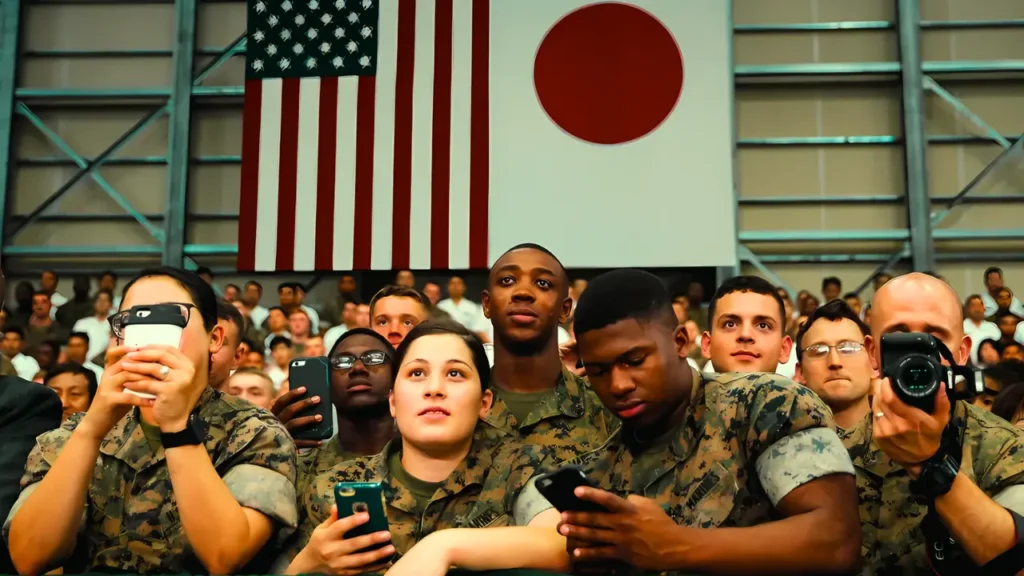In a move being hailed as “historic,” the United States has unveiled comprehensive plans to revamp its military forces stationed in Japan.
This strategic decision, outlined in a joint statement, aims to bolster defense collaboration between Washington and Tokyo in response to the growing security challenges in Asia.
Joint Statement: Strengthening Defense Cooperation
During a high-level meeting in Tokyo, US Secretary of State Antony Blinken and US Defense Secretary Lloyd Austin met with their Japanese counterparts, Yoko Kamikawa and Minoru Kihara, to announce this significant initiative.

The joint statement issued during this gathering highlighted China’s economic, political, and military activities as the “greatest strategic challenge” within the Asia-Pacific region.
The joint statement further emphasized that the US military forces in Japan will be restructured into a joint force headquarters, reporting directly to the Commander of US Indo-Pacific Command. The core objective of this reorganization is to enhance interoperability and cooperation on joint bilateral operations during both peacetime and contingencies.
According to Austin, this proposed overhaul represents the most profound transformation of US troops in Japan since their initial deployment. He asserted that the expanded missions and operational responsibilities would significantly upgrade US military capabilities in the region. This modernization effort is designed to deter and counteract coercive behaviors in the Indo-Pacific, thereby reinforcing the alliance’s strength.
Chinese Aggression: A Catalyst for Change
While this announcement is expected to provoke a strong reaction from Beijing, it comes in response to China’s escalating aggression in territorial disputes, coupled with North Korea’s persistent illegal weapons program. Moreover, both nations are increasingly aligning themselves with Russia, as Putin’s military continues its assault on Ukraine.

In April, US President Joe Biden and Japanese Prime Minister Fumio Kishida held a summit in Washington, during which they committed to strengthening their command-and-control frameworks. This commitment is aimed at safeguarding the Indo-Pacific region amidst mounting regional security challenges.
A senior US defense official disclosed to the media, ahead of the announcement, that there were no plans to integrate Japanese forces into US military commands. He noted that the specifics of the implementation would be developed by working committees comprising officials from the US Indo-Pacific Command.
Implications of the Strategic Rehabilitation
The planned reconfiguration signifies a dramatic shift in Japan’s defense posture from the pacifist stance it adopted under US influence after World War II. Now, Japan intends to increase its defense spending to approximately 2% of its GDP and acquire counter-strike capabilities by 2027.
These developments have cemented Japan’s role as a crucial element in the US regional security strategy, as the country seeks to enhance coordination with allies and partners amid rising tensions. In the wake of the ongoing conflict in Ukraine, Washington now perceives the security dynamics of Europe and Asia as deeply interconnected.

This strategic maneuver comes just months before the US presidential elections, which are being closely monitored by both allies and adversaries. Former President and Republican candidate Donald Trump has repeatedly questioned the financial burden of US alliances. Addressing concerns about the potential impact of the elections on US-Japan relations, Blinken reaffirmed that the longstanding alliance “is stronger than it’s ever been,” asserting that it would endure regardless of the electoral outcomes in either country.
US Forces Japan (USFJ), headquartered at the Yokota Air Base, consists of approximately 54,000 military personnel. These forces operate under a mutual cooperation and security treaty signed in 1960, underscoring the enduring nature of the US-Japan security relationship.



